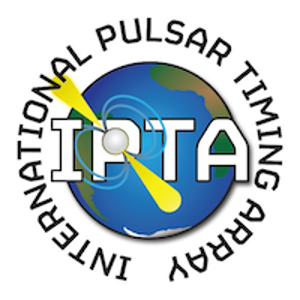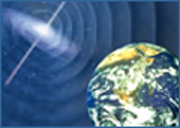LVK Collaboration Partners
The LSC regularly partners with the Virgo and KAGRA Collaborations to jointly analyze detector data and co-author observational results papers. Together, the three collaborations comprise the LIGO-Virgo-KAGRA Collaboration (or LVK Collaboration). For information on citing work by the LVK (or the earlier LIGO-Virgo Collaboration), see the Brief Guide to Citing the LIGO-Virgo-KAGRA Collaboration.
- Virgo (French-Italian gravitational-wave detector project)
- KAGRA (Japanese gravitational-wave detector project)
LSC Groups
Partner Experiments and Collaborations

The GEO600 Experiment / Collaboration
The GEO collaboration includes Max Planck and Leibniz Universität researchers and UK colleagues. They designed and operate the GEO600 gravitational-wave detector near Hannover, Germany. It is used as a think tank and testbed for advanced detector techniques. Many key technologies that contributed to the unprecedented sensitivity of Advanced LIGO (aLIGO) and enabled the discovery of gravitational waves were developed and tested within the GEO collaboration. Examples include signal recycling, resonant sideband extraction, and monolithic mirror suspensions. AEI researchers, together with the Laser Zentrum Hannover, also developed and installed the aLIGO high-power laser systems, which are crucial for high-precision measurements.

The Virgo Collaboration / European Gravitational Observatory (EGO) consortium
The VIRGO collaboration is composed of more than 700 scientists, engineers, and technicians coming from at least 129 institutions and 16 countries. The VIRGO collaboration is involved in the design, construction, and running of the VIRGO gravitational wave antenna, as well as the scientific exploitation of the data taken by the global network of GW detectors. The European Gravitational Observatory (EGO) consortium, created by CNRS and INFN, has responsibility to manage the VIRGO detector and coordinate future upgrades of the VIRGO antenna.

LISA – The Laser Interferometer Space Antenna
LISA is an ESA mission with NASA participation to deploy a constellation of three satellites at the vertices of an equilateral triangle several million kilometers on a side in heliocentric orbits twenty degrees behind that of the Earth. The long baseline allows detection of gravitational waves in the frequency band of approximately 20 microHertz to 1 Hertz. Location in space has the twin advantages of allowing longer baselines and avoiding seismic noise that precludes sensitive detection below approximately 1 Hz on Earth’s surface . A very successful technology mission, LISA pathfinder, was launched in December 2015 and demonstrated flight-readiness of most LISA Technologies. Mission planning is now underway at ESA and NASA, and in Europe and the US.

The Australian Research Council Centre of Excellence for Gravitational Wave Discovery (OzGrav)
The ARC Centre of Excellence for Gravitational Wave Discovery (formerly ACIGA) brings together Australian researchers working on the detection of gravitational waves and the development of gravitational wave and multi-messenger astronomy. Research by OzGrav members includes the development and installation of advanced optical instrumentation and stabilization techniques for the LIGO detectors, the development of data analysis techniques, and research into astrophysical sources of gravitational waves.

IPTA – The International Pulsar Timing Array collaboration
The International Pulsar Timing Array collaboration (IPTA) is a consortium of consortia comprising the European Pulsar Timing Array (EPTA), the North American NanoHertz Observatory for Gravitational Waves Physics Frontiers Center (NANOGrav PFC), and the Parkes Pulsar Timing Array (PPTA). The consortium currently includes 200 researchers from more than 60 institutions, and it is expanding to collaborations in China, South Africa and India. By timing an ensemble of ultra stable millisecond pulsars, the IPTA is the only experiment that is sensitive to gravitational waves in the nanohertz to microhertz frequency range, targeting supermassive black hole binaries and cosmological backgrounds. It is therefore complementary to ground- and space-based detectors and will result in unique insights into galaxy formation, evolution, and cosmology.

The Gravitational Wave International Committee
GWIC, the Gravitational Wave International Committee, was formed in 1997 to facilitate international collaboration and cooperation in the construction, operation, and use of the major gravitational wave detection facilities world-wide. It is affiliated with the International Union of Pure and Applied Physics as a subcommittee of IUPAP’s Particle and Nuclear Astrophysics and Gravitation International Committee. GWIC is also affiliated with the International Society on General Relativity and Gravitation.
Other partners
Other Related Projects
Complementary to LIGO searches, plans are being developed for constructing other gravitational wave detectors, both ground-based and space-based. Planned future gravitational wave experiments include:

